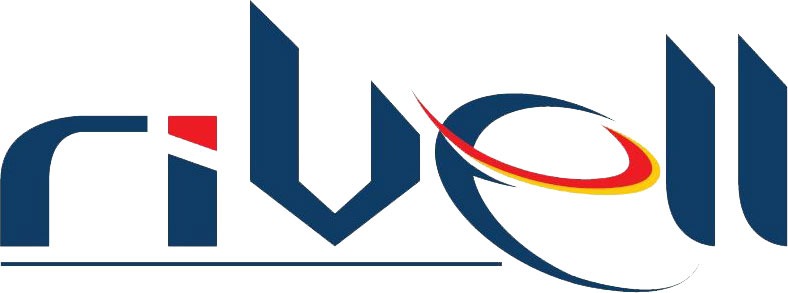The decision to choose between Staff Augmentation vs Managed Services is a crucial one for businesses that require additional support. The correct choice can help a company increase its productivity, while the wrong one can cost valuable resources. In this article, we will examine the key difference between managed services and staff augmentation and analyze when it is the right time to choose one over the other.
What is the meaning of Staff Augmentation?
The global staff augmentation market size is expected to be USD 147.2 billion by 2028, growing at a CAGR of 7.6% from 2021.
What is the meaning of Managed Services?

What is the difference between Staff Augmentation and Managed Services?
1. Scope of Service
In staff augmentation, the staffing company provides you with the required talent and each team member’s responsibilities are entirely yours.
In managed services, the provider is responsible for all or part of the work being done and manages the service being provided.
2. Duration of Engagement
Staffing services are suitable for short to midterm related projects while when it comes to Managed Services, it is about developing strategic partnerships working for long-term engagements.
3. Expertise and Skills
Staff augmentation is suitable when businesses have the necessary expertise, and only require additional people. In managed services, providers have to set up a Center of Excellence (CoE) to ensure that the appropriate skills and expertise are provided.
4. Responsibility and Accountability
In staff augmentation, your business is responsible for team management and delivery, whereas in managed services, the provider has complete management responsibility.
5. Scalability and Flexibility
Staff augmentation offers more flexibility and scalability since each team member’s involvement is brief and adjustable. On the other hand, managed services are more scalable and efficient, with a higher level of control and greater reliability.
6. Cost Structure
Staff augmentation fee’s is based on the hourly, weekly, or monthly rate of team members whereas Managed Services is fixed costs and levied on the outages of the SLA agreement.
Advantages of Staff Augmentation
1. Short-term staffing solutions
Companies can quickly and efficiently handle short-term staffing requirements. Whether it’s due to seasonal demands, specific projects, or temporary absences of employees, staff augmentation allows organizations to bring in skilled professionals on a temporary basis to meet these needs.
2. Reduced hiring and training costs
Instead of going through the lengthy and costly process of recruiting and onboarding new permanent employees, staff augmentation offers a cost-effective alternative. Companies can leverage the expertise of external professionals without incurring the expenses associated with recruitment, training, and benefits packages.
3. Increased operational efficiency and flexibility
Staff augmentation provides businesses with the flexibility to scale their workforce up or down as per their requirements. This scalability allows organizations to respond quickly to market fluctuations, project demands, or unexpected situations, ensuring optimal operational efficiency. Around 62% of businesses opt for staff augmentation due to its flexibility in scaling their technical workforce based on project demands.
4. Improved service delivery competency
By integrating specialized professionals through staff augmentation, companies can enhance their service delivery competency. This enables them to tap into a broader talent pool and access skills and knowledge that may not be available internally. As a result, the overall quality of service delivery can be raised, leading to increased customer satisfaction.
Disadvantages of Staff Augmentation
1. Difficulty in managing additional team members
Integrating new staff members into an existing team can be challenging. Project managers need to ensure seamless integration and clear role definition, which may require extra time and resources. Additionally, additional training might be needed for the new team members, leading to increased costs.
2. Potential communication issues
Staff augmentation can sometimes lead to communication gaps between the new team members and the existing staff. Misunderstandings can occur, causing delays and errors in project execution. If the augmentation is only temporary, the level of commitment and motivation among the augmented staff might not be as high as that of permanent employees.
Advantages of Managed Services
1. Cost-effective Service Level Agreement (SLA)
Managed services typically operate on a contractual basis, allowing organizations to establish a Service Level Agreement (SLA) that outlines the desired outcomes and performance levels. This contractual arrangement ensures cost predictability and accountability, as companies pay for the services provided based on the agreed-upon SLA. By utilizing managed services, organizations can achieve an average cost savings of 25-50% compared to maintaining their IT infrastructure internally.
2. Improved Service Availability
Managed service providers often offer 24/7 monitoring and support, ensuring high service availability. They have dedicated teams and resources to handle any issues or interruptions promptly, minimizing downtime and optimizing business operations.
3. Focused on Core Competencies
By outsourcing certain functions to managed service providers, organizations can focus their internal resources and efforts on their core competencies and strategic initiatives. This allows for greater specialization, innovation, and differentiation in areas where the company can add the most value.
4. Organizational Flexibility
Managed services enable companies to adapt and scale their IT infrastructure or services quickly. Whether they need to accommodate growth, implement new technologies, or respond to changing market dynamics, managed service providers offer the scalability and flexibility required to meet evolving business needs.
Read More : Benefits of Managed IT Services
Disadvantages of Managed Services
1. Potential loss of control
Outsourcing services to a managed service provider means relinquishing some control over the outsourced functions. Businesses may find limited flexibility in customizing services to their specific needs. Adapting to new or changing requirements might require updates to the provider’s service offering, resulting in immediate issues.
2. Vendor lock-in
Long-term contracts with managed service providers can lead to vendor lock-in, limiting the ability to switch providers or renegotiate contracts. This lack of flexibility can result in decreased pricing power and restrict the organization’s adaptability over time.
Read More : Top 10 Managed Service Providers in New Jersey
Staff Augmentation vs Managed Services
| Aspect | Staff Augmentation | Managed Services |
|---|---|---|
| Definition | Hiring individual professionals or teams | Outsourcing entire IT operations or processes |
| Control | Client retains direct control over resources | Service provider manages resources and tasks |
| Responsibility | Client oversees tasks and project management | Service provider handles tasks and projects |
| Flexibility | Offers flexibility in resource allocation | Offers less flexibility as per contract terms |
| Scalability | Easy to scale up or down based on requirements | Typically scalable, but may involve contract renegotiation |
| Expertise | Specific expertise can be targeted and obtained | Wide range of expertise available |
| Costs | Hourly or project-based costs | Fixed or variable costs based on service level agreements |
| Risk | Higher risk as client manages resources directly | Lower risk as service provider assumes responsibility |
| Focus | Focuses on resource availability and management | Focuses on delivering specific outcomes or services |
| Management | Client manages day-to-day tasks and supervision | Service provider manages day-to-day operations |
| Duration | Often used for short-term or specific projects | Typically involves long-term engagements |
| Integration | Resources integrate directly into client’s team | Service provider may work remotely or on-site depending on the arrangement |
| Training | Client may need to provide training and onboarding | Service provider typically handles training and onboarding of their own staff |
| Ownership | Client retains ownership of the final deliverables | Service provider may retain ownership or transfer it as per contract terms |
| Customization | Client can customize resource allocation based on project needs | Managed services are often standardized with less room for customization |
| Regulatory Compliance | Client is responsible for ensuring compliance of augmented staff | Service provider ensures compliance with relevant regulations |
| Risk Sharing | Risks are mainly borne by the client | Risks are shared between the client and the service provider based on the agreement |
| Technology | Client provides necessary technology infrastructure | Service provider may bring their own technology stack or use client’s infrastructure |
| Control over Processes | Client maintains control over internal processes | Service provider may introduce their own processes or align with client’s processes |
| Innovation | Limited innovation as resources may be focused on specific tasks | Managed services often include continuous innovation and improvement as part of the agreement |
| Service Level Agreement (SLA) | SLAs may be less comprehensive and tailored to specific needs | SLAs are typically detailed and cover various aspects of service delivery |
When to Choose Staff Augmentation
Staff augmentation is the right choice when businesses need additional resources to supplement current workforces on short-term projects, but do not require an external partner taking ownership of their service delivery or the tasks of project management.
When to Choose Managed Services
Managed services are the right choice for businesses that want to focus on their core competencies and offload non-core functions or where they have a long-term requirement for these services with the aim of maintaining business continuity and operational flexibility.
Managed Service vs Staff Augmentation: What Will Be The Right Choice?
When deciding between Managed Service vs Staff Augmentation, the choice depends on your specific needs. Managed Service involves outsourcing the management of a process or project to a third-party provider, providing end-to-end management and expertise. Staff Augmentation involves hiring temporary skilled professionals to supplement your existing team. If you want a comprehensive solution with streamlined processes and accountability, Managed Service is a good option. If you prefer more control over your project and want to be involved in resource management, Staff Augmentation might be a better fit. Ultimately, consider your project scope and level of involvement to determine the most suitable choice. Consulting Rivell will help you in making the decision.
Make The Best Decision For You With Rivell
When it comes to managing staffing decisions, it’s crucial to engage the right people. Rivell works with you to understand the personnel needs of your business, taking into account the job role, required skills, project duration, support requirements, etc. Our solutions are modified to address your organization’s staffing challenges, whether you are choosing staff augmentation services or managed services.
Conclusion
Both staff augmentation and managed services have their benefits. The decision to choose between the two models should be based on a thorough evaluation of each business’s goals, budget, and objectives. Whether you choose staff augmentation or managed services, the critical factor is to set clear expectations and definitions for the engaging provider. The relationship, transparency, and trust with the service provider will cover the way towards achieving real success











